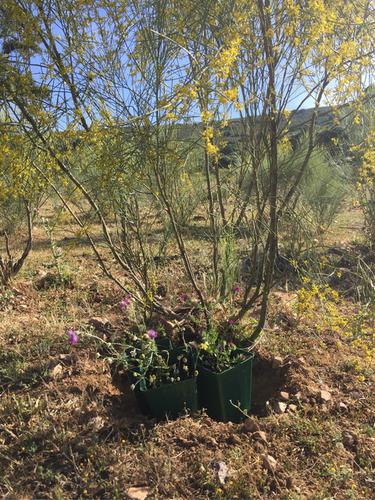Our official English website, www.x-mol.net, welcomes your
feedback! (Note: you will need to create a separate account there.)
Facilitation and biodiversity jointly drive mutualistic networks
Journal of Ecology ( IF 5.3 ) Pub Date : 2021-01-22 , DOI: 10.1111/1365-2745.13593 Gianalberto Losapio 1 , Elizabeth Norton Hasday 2 , Xavier Espadaler 3 , Christoph Germann 4 , Francisco Javier Ortiz‐Sánchez 5 , Adrian Pont 6 , Daniele Sommaggio 7 , Christian Schöb 8
中文翻译:

便利化和生物多样性共同推动了互惠网络
更新日期:2021-01-22
Journal of Ecology ( IF 5.3 ) Pub Date : 2021-01-22 , DOI: 10.1111/1365-2745.13593 Gianalberto Losapio 1 , Elizabeth Norton Hasday 2 , Xavier Espadaler 3 , Christoph Germann 4 , Francisco Javier Ortiz‐Sánchez 5 , Adrian Pont 6 , Daniele Sommaggio 7 , Christian Schöb 8
Affiliation

|
- Facilitation by nurse plants increases understorey diversity and supports ecological communities. In turn, biodiversity shapes ecological networks and enhances ecosystem functioning. However, whether and how facilitation and increased biodiversity jointly influence community structure and ecosystem functioning remains unclear.
- We performed a field experiment disentangling the relative contribution of nurse plants and increasing understorey plant diversity in driving pollination interactions. Both the presence of nurse shrubs and increased understorey plant diversity increased pollinator diversity and visitation rates. While nurse and understorey diversity effects on pollinator visitation rates did not interact, the effects of increasing understorey plant diversity on pollinator diversity were stronger in the absence than in the presence of shrubs, meaning that nurse shrubs attenuated the effects of high understorey diversity and buffered the effects of low understorey diversity.
- We also found positive complementarity effects among understorey species as well as complementarity between nurse plants and understorey species at high diversity. Results also indicate negative selection effects, suggesting that species with generally few pollinators benefit the most in the polyculture while a species (possibly the nurse plant) with generally lots of pollinators does not. The corresponding changes in pollination networks with the experimental treatments were due to both changes in the frequency of visits and turnover in pollinator community composition.
- Synthesis. Plant–plant facilitative systems, where a nurse plant increases understorey plant diversity, are common in stressful environments. Here, we show that these facilitative systems positively influence mutualistic interactions with pollinators via both direct nurse effects and indirect positive effects of increasing plant diversity. Conserving and supporting nurse plant systems is crucial not only for maintaining plant diversity but also for supporting ecosystem functions and services.
中文翻译:

便利化和生物多样性共同推动了互惠网络
- 护士对植物的促进增加了林下层的多样性,并为生态社区提供了支持。反过来,生物多样性塑造了生态网络并增强了生态系统的功能。但是,促进和增加生物多样性是否以及如何共同影响社区结构和生态系统功能仍不清楚。
- 我们进行了一项田间试验,以区分护理植物的相对贡献并增加地上植物的多样性在驱动授粉相互作用中。护士灌木的存在和林下植物多样性的增加都增加了传粉媒介的多样性和探望率。虽然护士和林下多样性对传粉媒介访视率的影响没有相互作用,但在不存在灌木下,增加林下植物多样性对授粉媒介多样性的影响要比在灌木情况下强,这意味着护士灌木减弱了林下植物高度多样性的影响并缓冲了灌木。低层多样性的影响。
- 我们还发现了林下物种之间的积极互补效应,以及高多样性的护士植物和林下物种之间的互补。结果还显示出负面的选择效应,这表明在传代培养中,传粉媒介很少的物种受益最大,而传粉媒介通常很多的物种(可能是保育植物)则没有。传粉网络与实验处理方法的相应变化是由于探访频率和传粉媒介群落组成转换的变化所致。
- 综合。在压力环境中,通常采用植物间促进系统,在这种系统中,护士植物会增加底层植物的多样性。在这里,我们表明这些促进系统通过直接的护士效应和增加植物多样性的间接积极效应,对与授粉媒介的相互影响产生积极影响。保护和支持护士植物系统不仅对于维持植物多样性至关重要,而且对于支持生态系统功能和服务也至关重要。









































 京公网安备 11010802027423号
京公网安备 11010802027423号